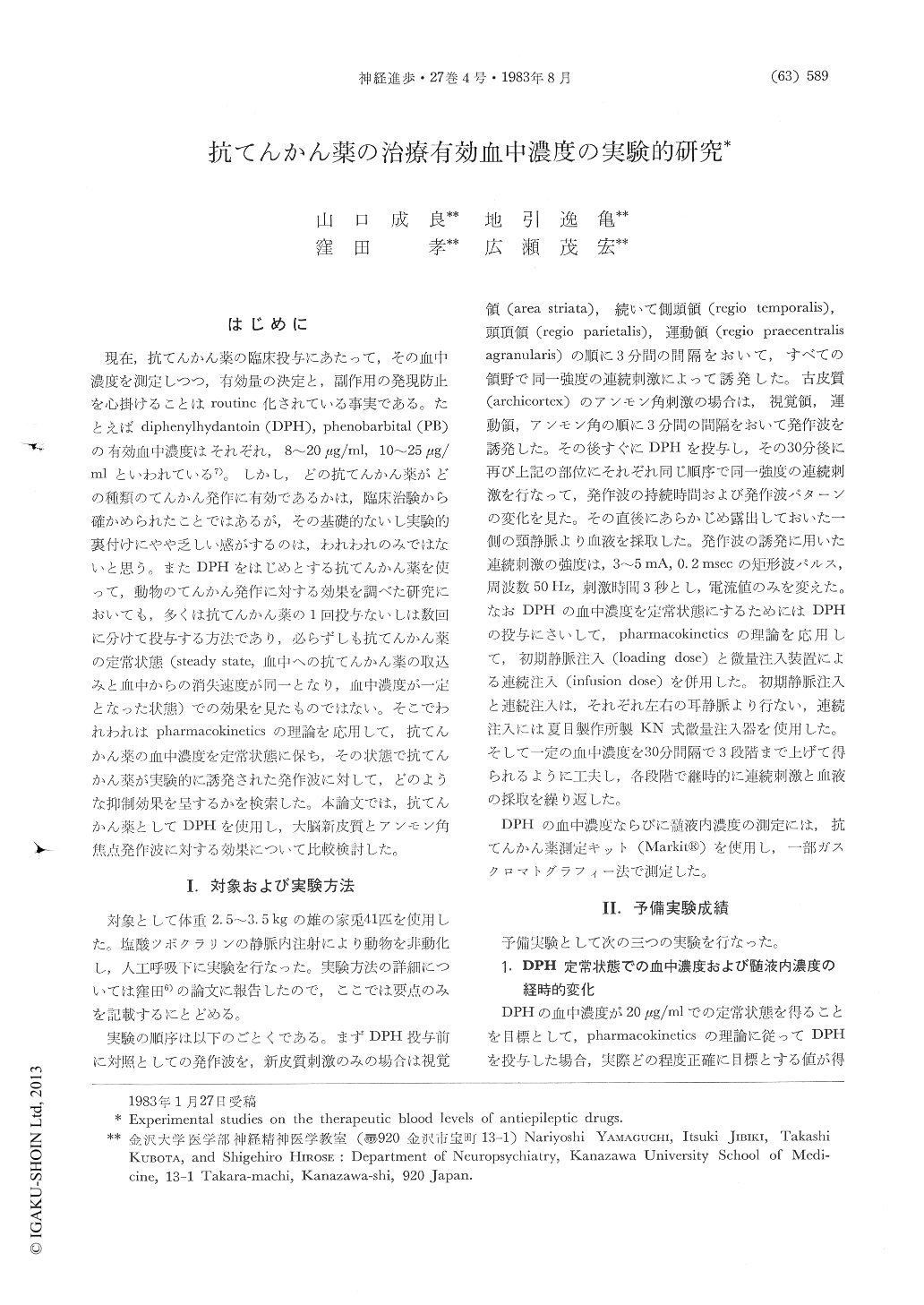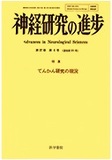Japanese
English
- 有料閲覧
- Abstract 文献概要
- 1ページ目 Look Inside
はじめに
現在,抗てんかん薬の臨床投与にあたって,その血中濃度を測定しつつ,有効量の決定と,副作用の発現防止を心掛けることはroutine化されている事実である。たとえばdipllenylhydantoin(DPH),phenobarbital(PB)の有効血中濃度はそれぞれ,8〜20μg/ml,10〜25μg/mlといわれている7)。しかし,どの抗てんかん薬がどの種類のてんかん発作に有効であるかは,臨床治験から確かめられたことではあるが,その基礎的ないし実験的裏付けにやや乏しい感がするのは,われわれのみではないと思う。またDPHをはじめとする抗てんかん薬を使って,動物のてんかん発作に対する効果を調べた研究においても,多くは抗てんかん薬の1回投与ないしは数回に分けて投与する方法であり,必らずしも抗てんかん薬の定常状態(steady state,血中への抗てんかん薬の取込みと血中からの消失速度が同一となり,血中濃度が一定となった状態)での効果を見たものではない。そこでわれわれはpharmacokineticsの理論を応用して,抗てんかん薬の血中濃度を定常状態に保ち,その状態で抗てんかん薬が実験的に誘発された発作波に対して,どのような抑制効果を呈するかを検索した。本論文では,抗てんかん薬としてDPHを使用し,大脳新皮質とアンモン角焦点発作波に対する効果について比較検討した。
Abstract
Acute experiments were conducted on 41 adult male rabbits weighing from 2.5 to 3.5kg, in order to clarify the relationship between the anticonvulsant effect of diphenylhydantoin (DPH) and the epileptogenicity in different neocortical areas and the dorsal hippocampus (archicortex).
Surgical operations were carried out under ether anesthesia. The rabbits were immobilized and artificially ventilated throughout the experiments.

Copyright © 1983, Igaku-Shoin Ltd. All rights reserved.


